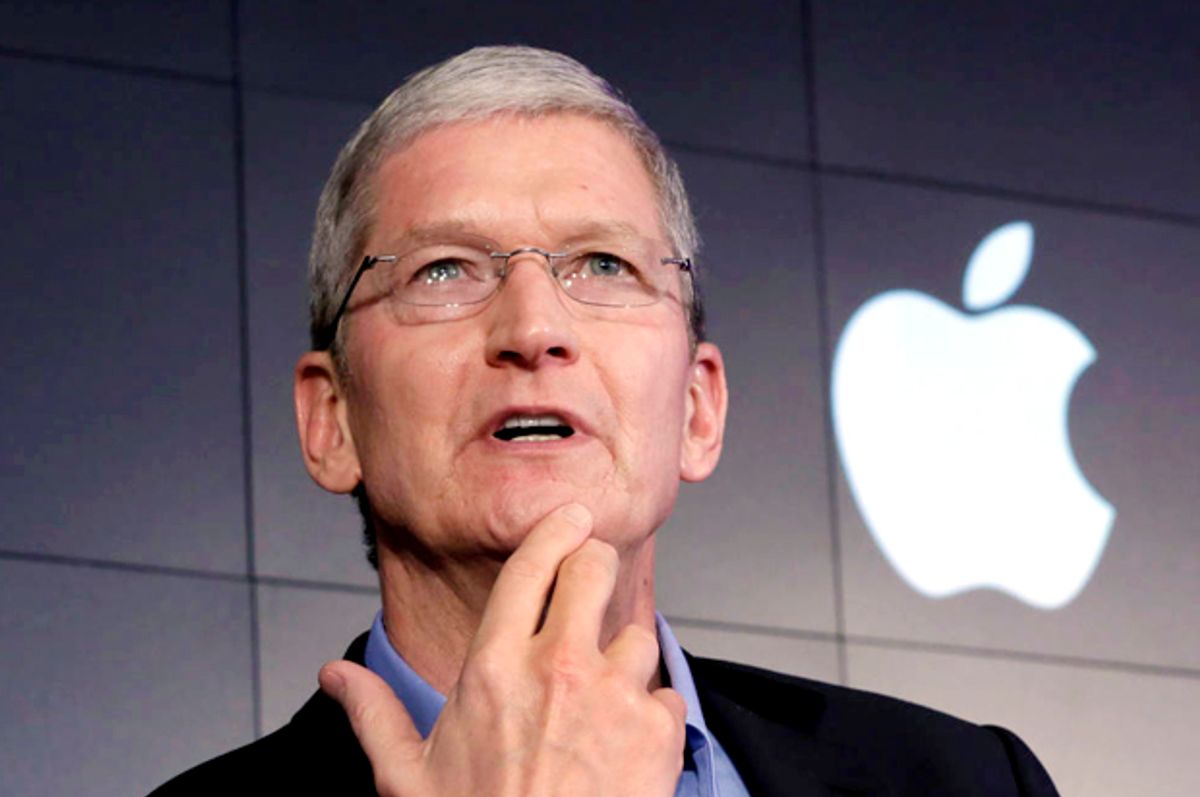Ever since the ’90s tech boom, tech journalists have tended to cover their beat a little differently. More specifically, compared to other journalistic fields, tech journalism is more likely to be reverent, even fawning, toward the subjects it is supposed to critique.
“Visit any technology-focused media outlet, or the tech sections of many news organizations, and you’ll see that ‘gadget porn’ videos, hagiographic profiles of startup founders or the regurgitation of lofty growth expectations from Wall Street analysts vastly outnumber critical analyses of technological disruption,” wrote my Salon colleague Angelo Young, in his article about how Silicon Valley sells a side of ideology with its gadgets. “[C]riticisms that do exist tend to focus on ancillary issues, such as Silicon Valley’s dismal lack of workplace diversity, or how innovation is upsetting norms in the labor market, or the class-based digital divide; all are no doubt important topics, but they’re ones that don’t question the overall assumptions that innovation and disruption are at worst harmless if not benevolent.”
This is the dismal state of tech journalism in the digital era: Because of the tech industry’s success at branding itself as selling a sunny, progressive vision of the future, most (but not all) tech journalists don’t really cover it with a critical eye. Some publications and blogs read like advertisements for gadgets, and breathlessly cover minor, quotidian firmware updates as if they were front-page stories.
Which leads us to a thought experiment: What if all news stories were written the way tech journalists cover their beats? What if all journalism was infected with the same cultish CEO adulation, the fawning adoration, the puff pieces about how this week’s disposable gadget is the most amazing thing to have ever existed? How might the news look to us then?
Reader, here’s a take on a shiny new product — not in the tech industry, but the fast-food industry — written from just that perspective.
It’s here: McDonald’s Lobster Roll 7
McDonald’s adds a fresher crustacean and an improved crunch at a higher price point — but should you buy it?
Reviewing the new Lobster Roll 7 is a lot like reviewing the previous models, but different. The roll, which was announced last week at the annual Worldwide Food-Eater’s Conference (WFEC) at the futuristic McDonald’s campus in Oak Brook, outwardly resembles the last Lobster Roll — but inside, it’s totally new.
Until recently, the notoriously secretive fast-food company had been mum about the next generation of its ever-popular sandwich. For the past two years, journalists have had to rely on the slow trickle of supply-chain rumors and leaked photos of questionable veracity to guess at the nature of the next model. The hype machine is so overblown that there’s a cottage industry of excitable vloggers who make a living creating speculative computer mock-ups of the next Lobster Roll and posting them on YouTube.
But back to the WFEC reveal: Perhaps the most surprising announcement from the Wizards of Oak Brook was the changed naming scheme. No more McLobster. It’s just Lobster Roll 7 now.
More elegant, perhaps, and an intriguing shift in marketing strategy for the decidedly minimalist company. Indeed, since meticulously engineering the first McLobster, the company has opted to make subtle year-to-year changes in its sandwich design, a strategy that makes sense given its astonishing popularity. Many reviewers believed the second generation model was “near-perfect”; how can you improve on perfection? Tinkering is all that’s left. Yet as sandwich tech improves, we can surely expect to see some of the fruits of that innovation implicated in this model. McDonald’s certainly spends a pretty penny on R&D.
If you take a closer look, most of the outward changes to this Lobster Roll model are subtle. For example, the way the lobster is cut is more angular than before — an interesting design decision for a company that always had a fetish for bevels. And for the first time, the lettuce no longer comes from Korean-based Lettuce International; relations between the two companies have been frosty ever since LI began selling a competitor crustacean roll.
While anticipation was sky-high for the next iteration of the Lobster Roll line, questions linger about McDonald’s ability to continue to dominate the industry. Mickey D fanboys have reason to be suspicious of this release; ever since the first groundbreaking McLobster was released in 1993, the crustacean fast-food space has become way more crowded. Rival Panera has been innovating in the crustacean sandwich world for the past few years, and has built up an impressive condiment ecosystem to rival that of McDonald's. Likewise, the new Lobster Roll 7 will be the first iteration of the McDonald's line released under the aegis of new CEO Steve Easterbrook, who last year took the reins from his iconic, brilliant, industry-defining predecessor, the ever-reclusive wunderkind Don Thompson — whose leadership of the industry-defining company has been immortalized in five biopics over the past 10 years, including an eponymous 2016 film written by Aaron Sorkin.
But enough about expectations. What about the product?
Let’s just say that fanboys are likely to call this Lobster Roll “world changing” (many of them without even tasting it, if the long lines outside McDonald’s stores across the globe are any indication). You may roll your eyes at such an epithet, but they may indeed be right. Even the most crotchety reviewers will likely admit that the Lobster Roll 7 epitomizes a paradigm shift for the industry. And to those who say it’s barely an innovation on previous models, I say this: Why mess with perfection?



Shares